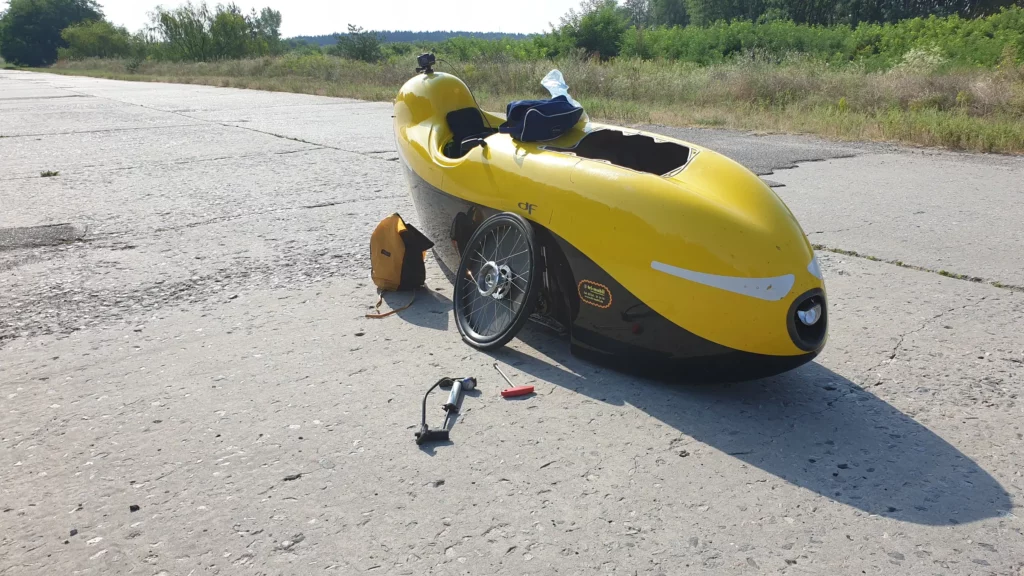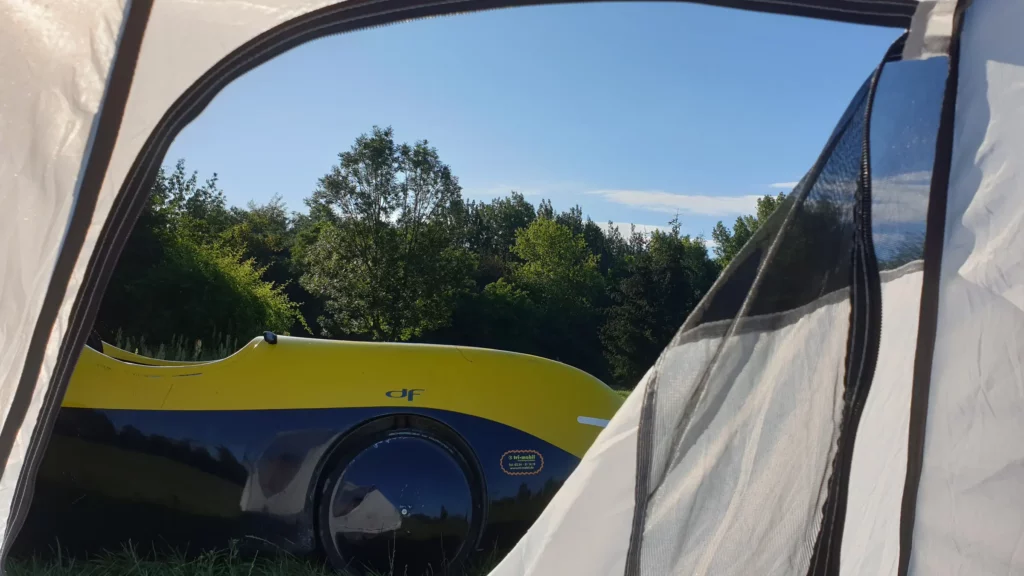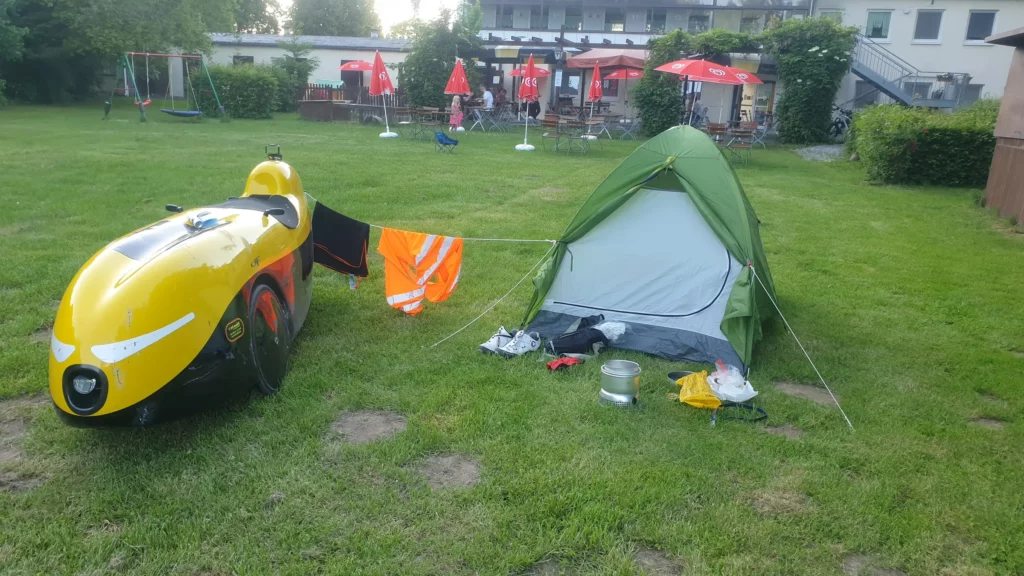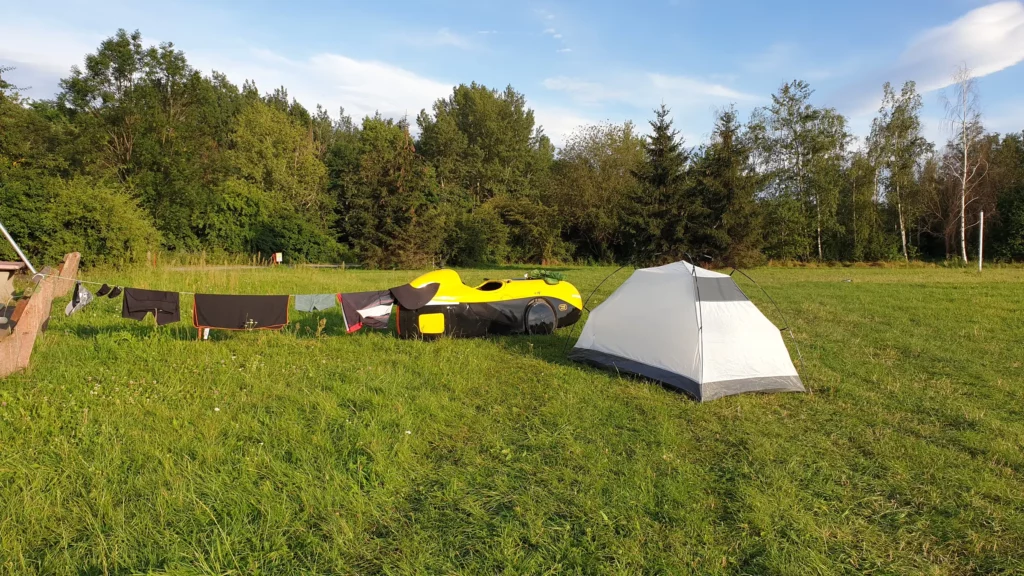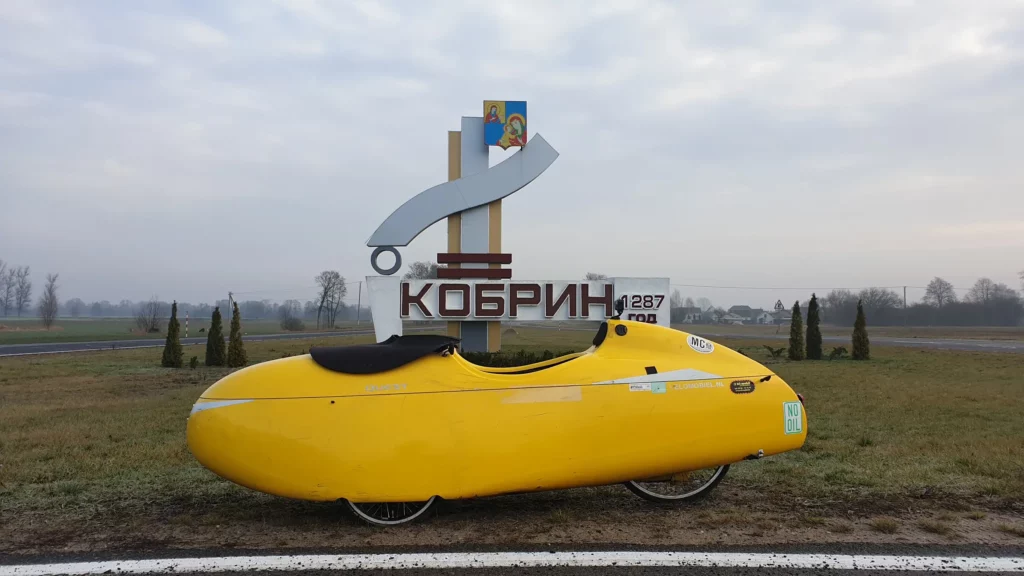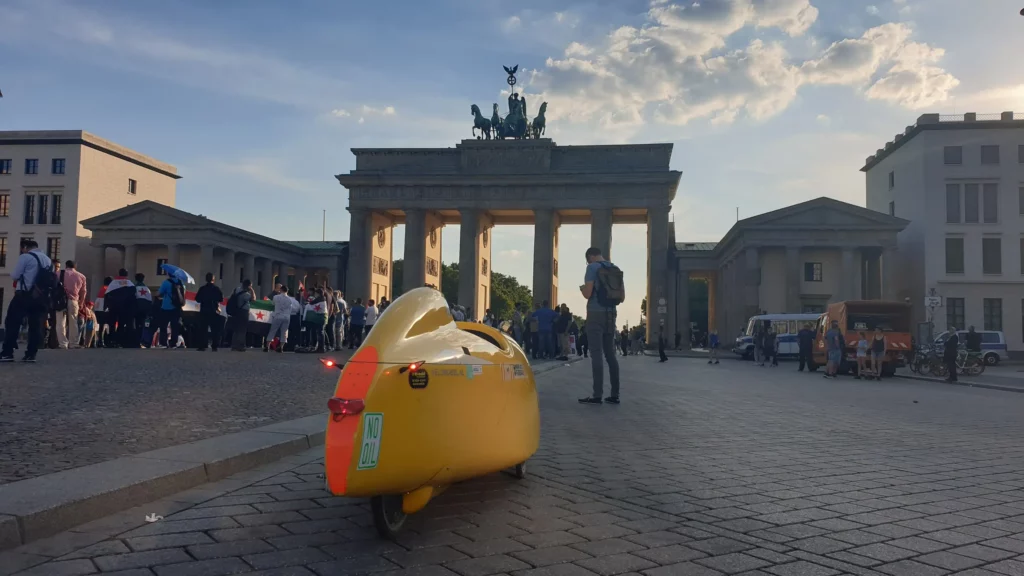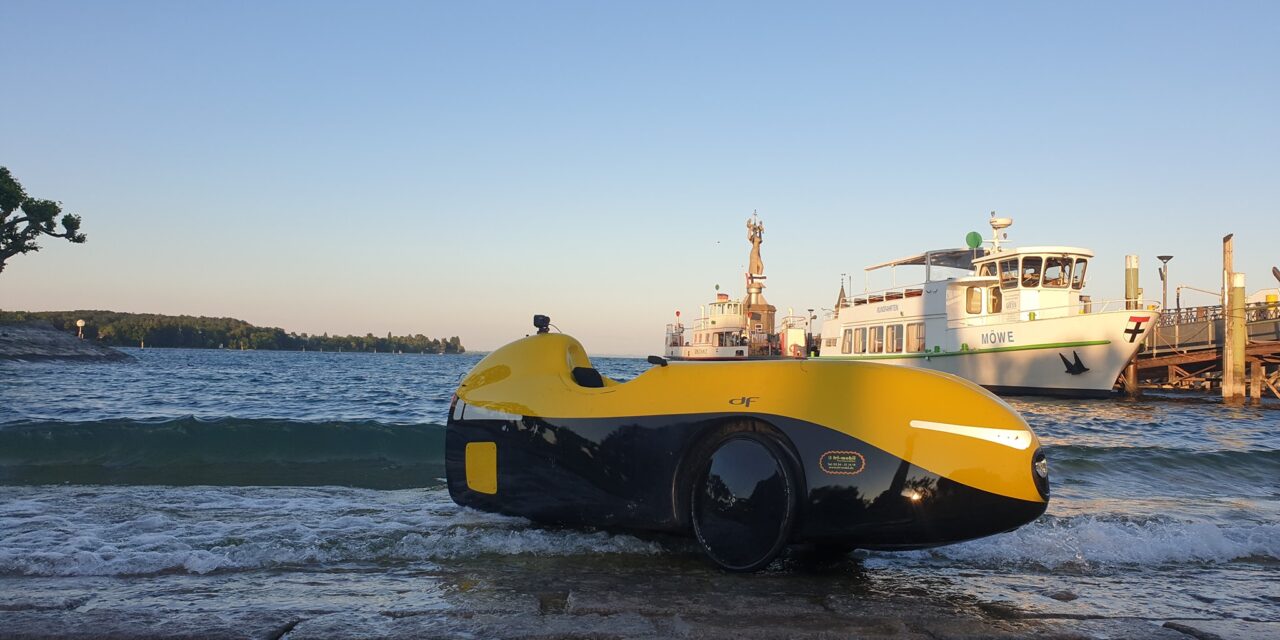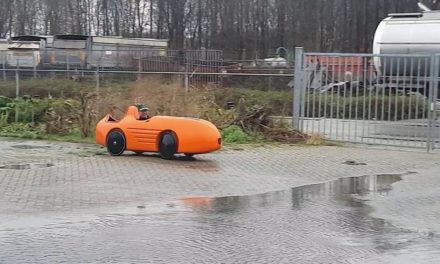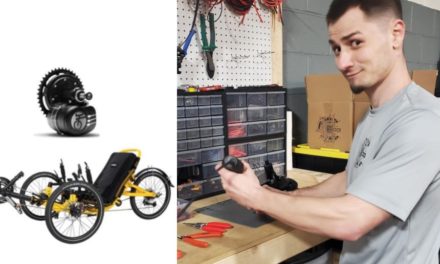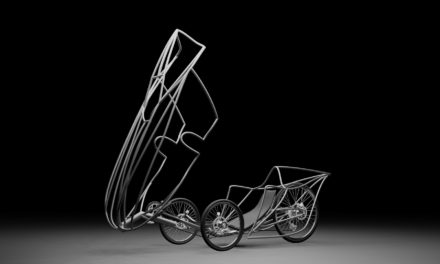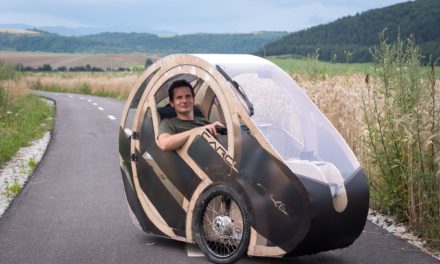Traveling by velomobile is an exciting adventure that offers a unique blend of efficiency, comfort, and environmental sustainability. While the overall answer to the question of whether velomobiles are good for traveling is a firm “YES,” it’s important to address several considerations that can affect the overall experience. I have prepared this article in cooperation with Velomobile World – the world’s largest velomobile manufacturer – and the main goal is to provide transparency and honesty to ensure that future owners have realistic expectations and get maximum satisfaction from their unique cycles.
Comfort and speed. That’s what it’s all about!
Velomobiles are generally designed for speed and efficiency which, for some, can be very attractive while on long tours. Their aerodynamic structure reduces drag, allowing riders to reach higher speeds with less effort. This makes velomobiles not only efficient for daily commuting, but also ideal for touring and covering long distances in comfort. The reduced drag, combined with efficient pedaling, enhances their long-distance capabilities, making them a reliable choice for a variety of travel purposes.
One of the key considerations is the cargo and storage space that velomobiles offer. Equipped with storage compartments or cargo areas, these vehicles become practical choices for everyday errands and you can use them for extended trips as well. You may have issue to fit inside everything you would normally carry in front and rear panniers plus the upper one on an upright bike, but modern light and small equipment will fit very well.
Of course, velomobiles offer the same comfortable riding position as all other recumbent bikes, so you can enjoy long rides in total comfort. The ergonomic seating position and comfortable seats relieve strain on muscles and joints during long rides, preventing fatigue and discomfort. This feature allows riders to enjoy longer trips without feeling tired, contributing to a more enjoyable travel experience.

Next to speed, weather protection is the second best and most remarkable advantage of velomobiles when it comes to traveling. I don’t mind short and light rain when I ride a recumbent, but my wife Eliška hates it because her body is almost completely open to the pouring water. The closed shell of a velomobile provides a shield against elements such as rain, wind and cold temperatures. This protection ensures that riders can travel comfortably regardless of weather conditions.
Running on human power alone or in combination with an electric motor that can even be paired with a solar panel, velomobiles produce zero emissions, contributing to reduced pollution and a smaller carbon footprint. At a time when individuals are increasingly aware of their impact on the environment, choosing a velomobile for travel is consistent with the principles of sustainable mobility and helps reduce the overall impact of transportation on the environment. In addition, the health benefits of traveling in a velomobile cannot be overlooked.
Some other advantages mentioned by experienced velonaut:
– You always have your compartment with you. It stays dry and does not get dirty. You don’t have to worry about someone stealing your Ortlieb bag with all your stuff when you park. Just put a cover over the Velomobile and turn on the alarm.
– You don’t need a lot of special clothing for different weather conditions. Most of the time you ride in short clothes. And if it rains, you don’t have to change or wear rain gear.
– You can secure or hide valuable items much better in a velomobile.
Any issues to solve while touring with velomobile?
There is perhaps no activity or thing in the world that has only positives. You will find some negative everywhere and always. And so it is with velomobiles if you want to use them to travel. So what should you prepare for?
Terrain and infrastructure play a role, as velomobiles are most efficient on flat or gently rolling terrain. A regular velomobile is heavier than a common upright bicycle and therefore more challenging to ride uphill. Similarly, we know that recumbent bikes are generally slower on hills because the rider can’t stand in the pedals. On the other hand, the average velomobile today is about as heavy as the average trike equipped for touring. And in the end, it is probably even lighter. On a trike, you need fenders, racks and panniers for touring, all of which are sort of natural parts of a velomobile.
So the only major drawback for some wilder expeditions is the low ground clearance and the overall design of the velomobile, which is primarily intended for paved roads. On the other hand, the photos for this article are by Jascha Beuttler, who has traveled much of Europe in his velomobile, including countries like Belarus and Ukraine, and I have to tell you that Ukrainian roads, even from before the war, were quite often really bad. Likewise, in the amazing double-interview about The Sun Trip 2021 solar bike race, where two velomobiles took two first places, you’ll find photos of their vehicles on gravel roads.
That said, there’s no need to worry and spend a long time planning a future trip. Adapting to the conditions around you is part of travelling, in fact an integral part of it and often the most fun thing about it at all.
If you decide to travel in summer, one of the advantages of velomobiles turns against you. And that’s the full fairing. If it’s really hot outside, and you’re also climbing a long way up hills, the heat builds up inside the velo and there’s not much way to ventilate it. So it helps to ride without a racing hood, with an open access, and of course have plenty of water.
Storage and parking requirements are other considerations, as velomobiles are larger than conventional bicycles. Because of that finding a safe place to store them, such as in hotels, can be problematic.
Finally, the learning curve associated with riding a velomobile should not be overlooked. The handling, balance and braking characteristics are different from a conventional bicycle, and it takes time and practice to get used to the unique dynamics of a velomobile. I always recommend that people who plan to travel on recumbents, trikes or velomobiles spend as much time as possible riding them before embarking on a long trip. This is the only way your body can adjust to the new way of riding in a recumbent position. Many people want to start right away, but this can cause problems and pain later on.
And one more disadvantage from Jascha:
– The downside is when you have a breakdown. You cannot just take your velomobile on the train to get home. In my cases, I always had to pick it up later by car.
In conclusion, while velomobiles offer some advantages for long distance bike toruing, there are also some disadvantages that need to be addressed. However, the best way to deal with these issues is to start with shorter trips and find the solution that works best for you. Much more information about velomobiles can be found right on the website of Velomobile World.
